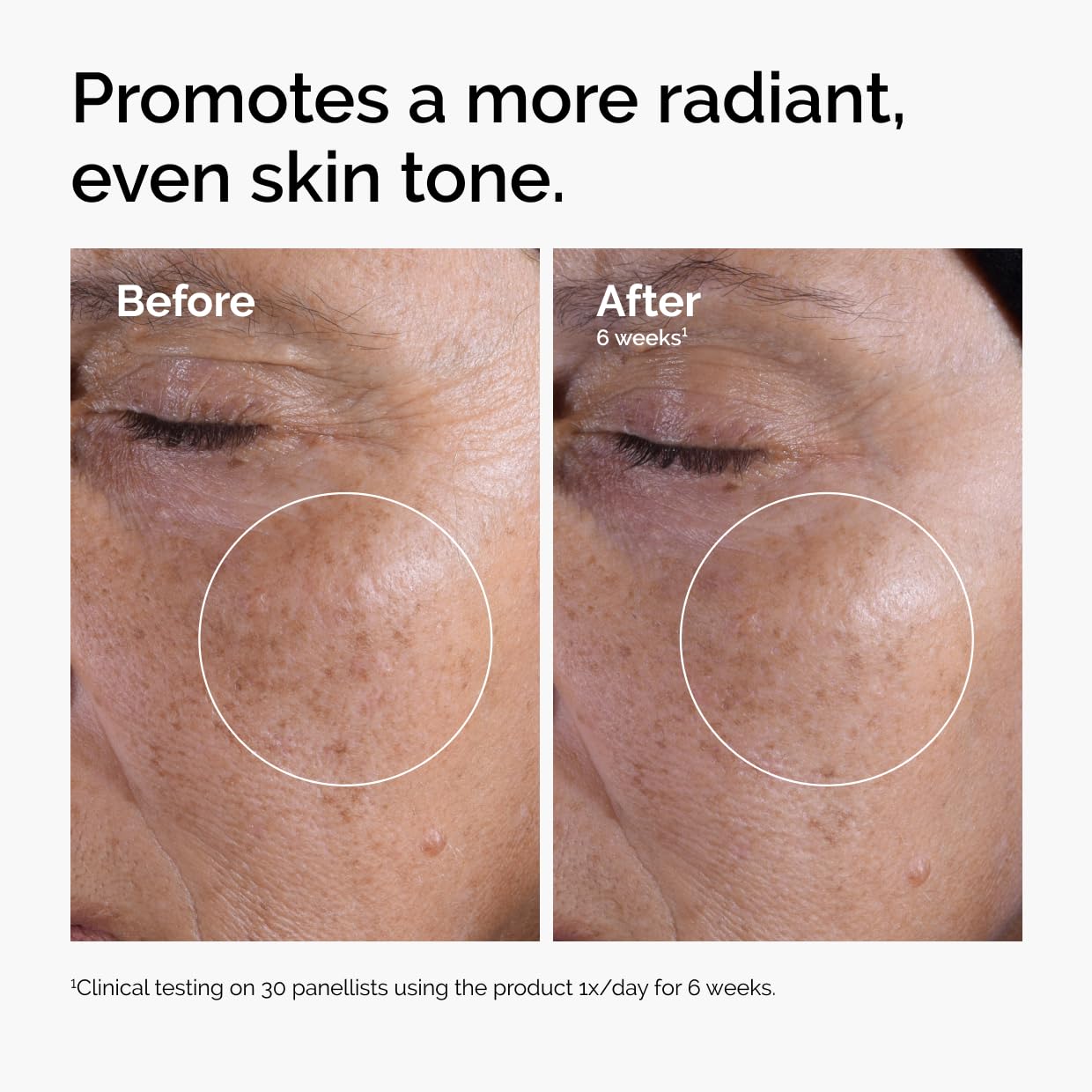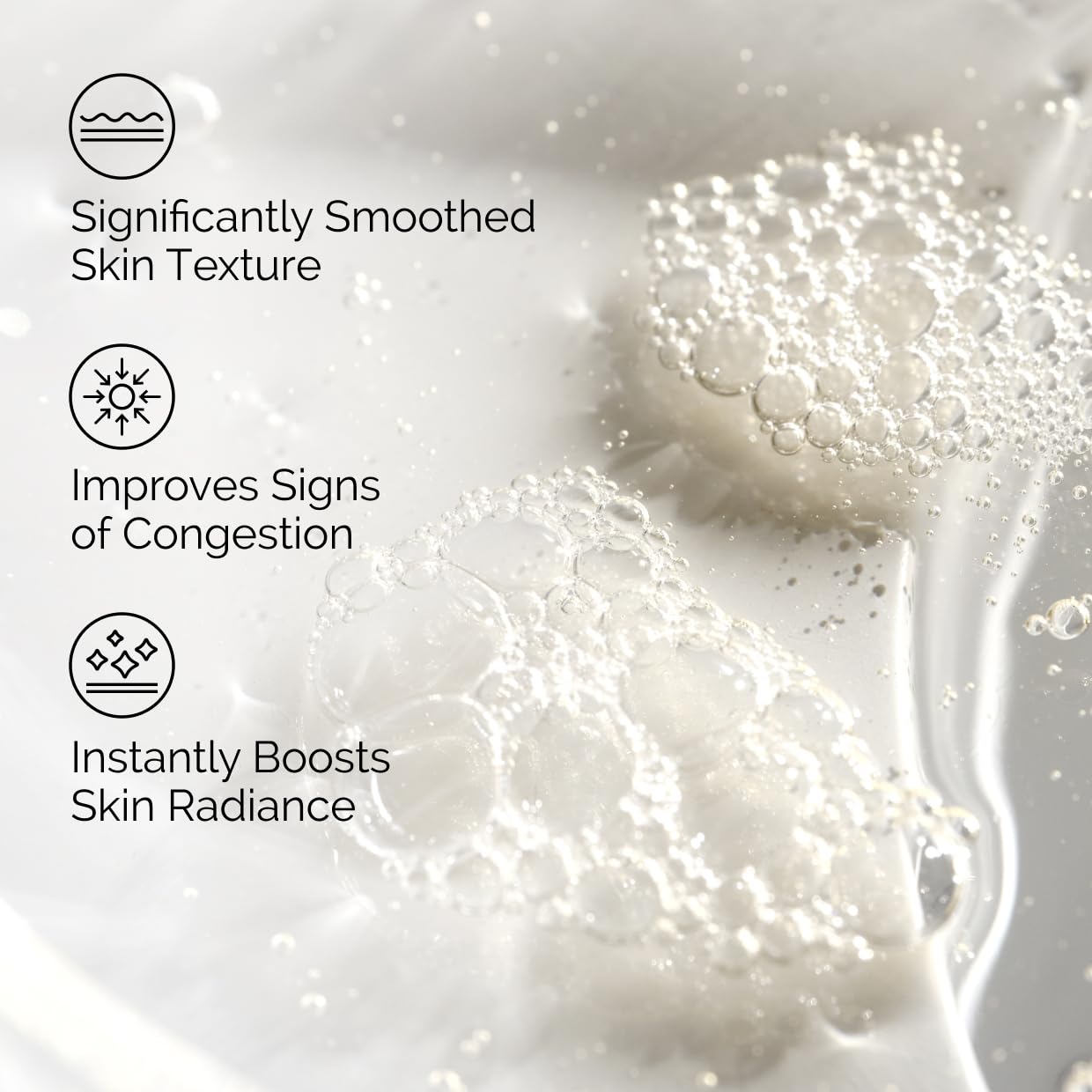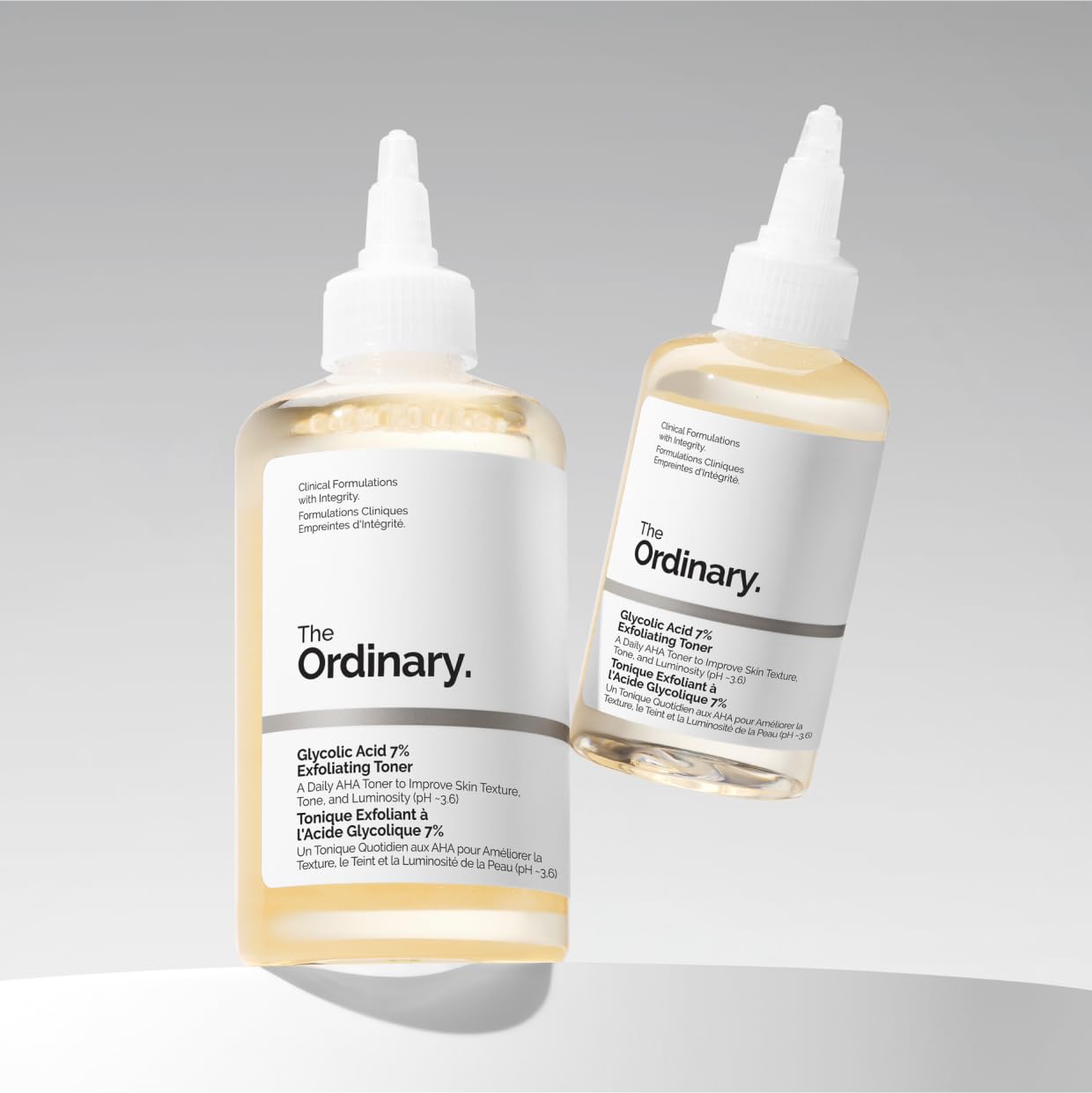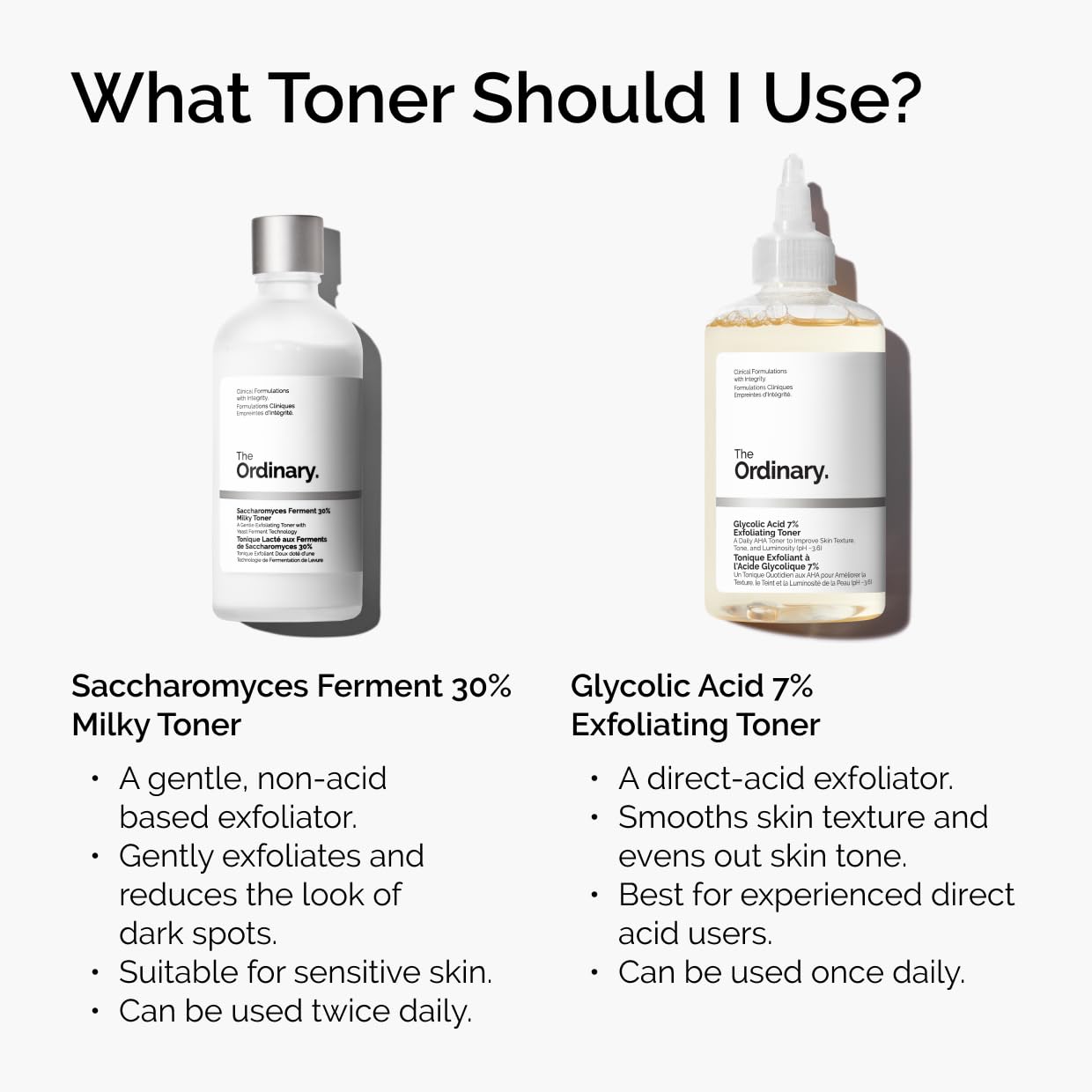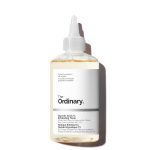
The Ordinary Glycolic Acid 7% Review toner Buying Guide – Oemiu
The Ordinary Glycolic Acid 7% Toning Solution: Unveiling Radiant Skin
The quest for flawless, radiant skin is a journey many embark on, often navigating a sea of products promising miraculous transformations. Among these, chemical exfoliants, particularly those containing alpha hydroxy acids (AHAs) like glycolic acid, have risen in popularity. The Ordinary, a brand celebrated for its transparent formulations and affordable price points, offers its own version: the Glycolic Acid 7% Toning Solution. This toner has garnered significant attention, sparking both enthusiastic reviews and cautious skepticism. This article delves deep into the world of The Ordinary’s glycolic acid toner, exploring its formulation, benefits, potential drawbacks, how to integrate it into your skincare routine, and ultimately, helping you decide if it’s the right choice for your skin. Whether you’re a seasoned skincare enthusiast or just beginning your journey, understanding the nuances of this potent product is crucial.
Decoding Glycolic Acid: The Science Behind Exfoliation
Glycolic acid, derived from sugar cane, belongs to the AHA family. These acids work by loosening the bonds between dead skin cells on the surface, effectively exfoliating the skin. This process reveals the fresher, brighter skin underneath, leading to a more even skin tone and texture. But why choose glycolic acid over other AHAs or even BHAs (beta hydroxy acids)? Glycolic acid has the smallest molecular size among AHAs, allowing it to penetrate the skin more readily and deliver more pronounced results. This penetration allows it to stimulate collagen production, which helps to diminish the appearance of fine lines and wrinkles over time. However, its potency also means it can be irritating, especially for sensitive skin.
The Ordinary’s Glycolic Acid 7% Toning Solution stands out because it delivers a relatively high concentration of glycolic acid in a water-based formula. This is crucial because a higher concentration translates to potentially faster and more noticeable results. Many other glycolic acid toners on the market contain lower concentrations, often below 5%, which might not be as effective for some individuals. However, the percentage isn’t the only factor to consider. The pH level of the product also plays a significant role. The Ordinary’s toner is formulated with a pH that allows the glycolic acid to be effective, but it also includes ingredients like Tasmanian Pepperberry derivative to help minimize irritation. Finding the right balance between efficacy and gentleness is key when choosing any exfoliating product, and this is a major consideration with this specific offering. Let’s not forget the supporting ingredients: Amino acids, Aloe Vera, Ginseng Root Extract and more, providing a soothing and hydrating touch to help balance the potential dryness from the glycolic acid.
| Ingredient | Purpose |
|---|---|
| Glycolic Acid (7%) | Exfoliates, improves skin texture and tone |
| Tasmanian Pepperberry Derivative | Reduces irritation associated with acid use |
| Aloe Barbadensis Leaf Juice | Soothes and hydrates the skin |
| Ginseng Root Extract | Provides antioxidant benefits |
| Amino Acids | Supports skin hydration |
Assessing the Benefits: More Than Just Exfoliation
The benefits of incorporating The Ordinary Glycolic Acid 7% Toning Solution into your routine extend beyond simple exfoliation. Regular use can lead to a multitude of improvements in skin appearance and overall health. Firstly, it effectively targets hyperpigmentation, the uneven skin tone caused by sun damage, acne scars, or hormonal changes. The glycolic acid helps to fade dark spots and melasma by promoting cell turnover, replacing pigmented cells with newer, healthier ones. Many users have reported a noticeable reduction in the appearance of sunspots after consistent use over several weeks.
Secondly, the toner helps to unclog pores and prevent breakouts. By removing dead skin cells that can trap oil and debris within pores, it minimizes the formation of blackheads, whiteheads, and acne. This is particularly beneficial for individuals with oily or acne-prone skin. However, it’s crucial to note that while it can help prevent breakouts, it’s not a direct treatment for active acne. If you have severe acne, it’s essential to consult a dermatologist for a comprehensive treatment plan.
Thirdly, it boosts the efficacy of other skincare products. By removing the barrier of dead skin cells, the toner allows serums, moisturizers, and other treatments to penetrate deeper and work more effectively. This synergistic effect can significantly enhance the overall results of your skincare routine. Imagine applying your favorite hydrating serum after using the toner; the serum will be able to reach deeper layers of the skin, providing more intense hydration. In this way, the glycolic acid toner acts as a catalyst, optimizing the performance of the other products in your regimen. Using a gentler and more hydrating facial toner for sensitive skin might be a better alternative for those with easily irritated skin.
Furthermore, the consistent exfoliation promotes a smoother, more refined skin texture. Fine lines and wrinkles appear less noticeable, and the skin feels softer and more supple. This is due to the increased cell turnover and the stimulation of collagen production. Finally, the addition of amino acids, aloe vera, and ginseng root extract provides soothing and hydrating benefits, helping to counteract the potential dryness associated with glycolic acid.
Here’s a summary of the key benefits:
* Improved skin texture
* Reduced hyperpigmentation
* Unclogged pores and prevention of breakouts
* Enhanced efficacy of other skincare products
* Smoother, more refined skin
* Hydrating and soothing effects
Navigating the Potential Drawbacks: Is it Right for Your Skin?
Despite its numerous benefits, The Ordinary Glycolic Acid 7% Toning Solution isn’t a one-size-fits-all solution. It’s essential to carefully consider your skin type and sensitivity before incorporating it into your routine. The most common drawback is irritation. Glycolic acid can cause redness, dryness, peeling, and even burning, especially in individuals with sensitive or compromised skin. It’s crucial to start slowly, using the toner only once or twice a week, and gradually increasing the frequency as your skin tolerates it. Always perform a patch test on a small area of skin before applying it to your entire face.
Another potential issue is increased sun sensitivity. Exfoliating the skin removes the protective layer of dead cells, making it more vulnerable to UV damage. This underscores the absolute necessity of wearing sunscreen daily, even on cloudy days. Neglecting sunscreen while using glycolic acid can negate all the benefits and even worsen hyperpigmentation. Aim for a broad-spectrum sunscreen with an SPF of 30 or higher.
Furthermore, individuals with certain skin conditions, such as eczema, rosacea, or psoriasis, should exercise extreme caution or avoid using glycolic acid altogether. These conditions often involve a compromised skin barrier, which can make the skin more susceptible to irritation and inflammation. If you have any of these conditions, consult with a dermatologist before using any exfoliating product.
Over-exfoliation is another common pitfall. Using glycolic acid too frequently or in combination with other exfoliating products can damage the skin barrier, leading to dryness, irritation, breakouts, and even inflammation. It’s important to listen to your skin and adjust the frequency of use accordingly. If you experience any signs of over-exfoliation, such as redness, tightness, or increased sensitivity, discontinue use immediately and focus on repairing your skin barrier with hydrating and soothing products. Always err on the side of caution and remember that less is often more when it comes to chemical exfoliants. Look for facial toner for dry skin with calming ingredients such as green tea extract.
Here’s a summary of the potential drawbacks:
* Irritation, redness, and peeling
* Increased sun sensitivity
* Not suitable for certain skin conditions (eczema, rosacea, psoriasis)
* Risk of over-exfoliation
* May not be suitable for very dry or sensitive skin types
Integrating Glycolic Acid into Your Skincare Routine: A Step-by-Step Guide
Integrating The Ordinary Glycolic Acid 7% Toning Solution into your skincare routine requires a strategic approach. Start with a clean slate. Begin by cleansing your face with a gentle cleanser to remove makeup, dirt, and oil. Pat your skin dry with a clean towel.
Next, apply the toner. Saturate a cotton pad with the Glycolic Acid 7% Toning Solution and gently swipe it across your face and neck, avoiding the delicate eye area. Do not rinse. Allow the toner to absorb completely before proceeding to the next step. Some people prefer to apply it directly to their hands and pat into the skin.
Follow with your serums. Apply your favorite serums, starting with the thinnest consistency and working your way up to the thickest. If you’re using vitamin C, it’s generally recommended to apply it before glycolic acid. However, avoid using retinol at the same time as glycolic acid, as this can significantly increase the risk of irritation. Use retinol at night on a night when you don’t use glycolic acid.
Moisturize and protect. Finish with a moisturizer to hydrate and protect your skin barrier. During the day, always apply a broad-spectrum sunscreen with an SPF of 30 or higher. This is non-negotiable when using any exfoliating product.
Remember to start slowly. Begin by using the toner only once or twice a week, gradually increasing the frequency as your skin tolerates it. Monitor your skin closely for any signs of irritation and adjust the frequency accordingly. Some people find that using it only once a week is sufficient, while others can tolerate it every other day. It is important to use a hydrating essence toner to keep the skin moisturized.
Consider the time of day. Many people prefer to use glycolic acid at night, as this allows the skin to recover and repair itself overnight. However, you can also use it in the morning, provided you diligently apply sunscreen afterward. Ultimately, the best time to use it depends on your personal preference and your skin’s tolerance.
Here’s a sample routine:
* **Cleanse:** Gentle cleanser
* **Tone:** The Ordinary Glycolic Acid 7% Toning Solution (1-2 times per week to start)
* **Serum:** Vitamin C (optional, apply before glycolic acid)
* **Moisturize:** Hydrating moisturizer
* **Protect:** Broad-spectrum sunscreen (SPF 30 or higher, during the day)
Alternatives and Complements: Expanding Your Skincare Arsenal
While The Ordinary Glycolic Acid 7% Toning Solution is a powerful exfoliant, it’s not the only option available. Exploring alternatives and complements can help you tailor your skincare routine to your specific needs and preferences. For those with sensitive skin, consider milder AHAs like lactic acid or mandelic acid. These acids have larger molecular sizes than glycolic acid, meaning they penetrate the skin more slowly and are less likely to cause irritation. The Ordinary also offers a Lactic Acid 10% + HA formulation, which is a good alternative for those new to chemical exfoliation.
For those looking for a more comprehensive exfoliating solution, consider incorporating BHAs like salicylic acid. Salicylic acid is oil-soluble, meaning it can penetrate deep into pores and dissolve oil and debris. This makes it particularly effective for treating blackheads and whiteheads. You can alternate between glycolic acid and salicylic acid, using them on different days to target both surface and deep exfoliation. Just remember not to use them on the same day to avoid over-exfoliation.
Other complementary products include hydrating serums containing hyaluronic acid or niacinamide. These ingredients can help to counteract the potential dryness and irritation associated with glycolic acid. Using a hydrating serum after applying the toner can help to replenish moisture and soothe the skin.
Finally, consider incorporating a gentle enzyme peel into your routine once or twice a month. Enzyme peels use natural enzymes derived from fruits like papaya or pineapple to exfoliate the skin. They are generally milder than AHAs and BHAs and can provide a gentle but effective form of exfoliation. They can also be a great option for those with sensitive skin who cannot tolerate stronger chemical exfoliants. Another excellent option is a mild exfoliating cleanser that contains salicylic acid.
| Product Type | Alternatives/Complements | Benefits |
|---|---|---|
| AHA Alternative | Lactic Acid | Milder exfoliation, suitable for sensitive skin |
| BHA Complement | Salicylic Acid | Deep pore cleansing, treats blackheads and whiteheads |
| Hydration | Hyaluronic Acid Serum | Replenishes moisture, reduces dryness |
| Soothing | Niacinamide Serum | Reduces inflammation, improves skin barrier function |
| Gentle Exfoliation | Enzyme Peel | Mild exfoliation, suitable for sensitive skin |
Frequently Asked Questions (FAQ)
Can I use The Ordinary Glycolic Acid 7% Toning Solution every day?
What factors determine usage frequency?
While some people can tolerate daily use, it’s generally not recommended, especially for beginners. Start by using it once or twice a week and gradually increase the frequency as your skin adapts. Pay close attention to your skin’s reaction. Redness, dryness, peeling, or increased sensitivity are signs that you’re over-exfoliating. Factors that influence how often you can use the product include your skin type, your skin’s sensitivity level, other products you are using in your skincare routine, and the climate you live in. Someone with oily skin in a humid climate might be able to use the product more frequently than someone with dry skin in a dry climate. Listen to your skin and adjust accordingly.
Is The Ordinary Glycolic Acid 7% Toning Solution safe for sensitive skin?
Are there any precautions to take for sensitive skin?
It can be, but caution is crucial. Due to the potential for irritation, individuals with sensitive skin should proceed with extreme care. Before applying the toner to your entire face, perform a patch test on a small, discreet area of skin (e.g., behind your ear) and wait 24-48 hours to see if any adverse reaction occurs. If you experience any redness, itching, or burning, discontinue use. If the patch test is successful, start by using the toner only once a week and gradually increase the frequency as your skin tolerates it. You might also consider diluting the toner with water or a hydrating toner to reduce its potency. Alternatively, consider a milder AHA like lactic acid.
Can I use The Ordinary Glycolic Acid 7% Toning Solution with other actives like retinol?
What are the potential interactions?
Combining glycolic acid with other potent actives, particularly retinol, can significantly increase the risk of irritation and over-exfoliation. It’s generally recommended to avoid using them together on the same day. If you want to incorporate both into your routine, use them on alternating nights. For example, you could use glycolic acid on Monday and Thursday, and retinol on Tuesday and Friday. Always monitor your skin closely for any signs of irritation. Vitamin C can generally be used with glycolic acid; however, it is best to apply Vitamin C before applying glycolic acid.
Does The Ordinary Glycolic Acid 7% Toning Solution help with acne?
While the Glycolic Acid 7% Toning Solution can help prevent breakouts by unclogging pores and removing dead skin cells, it’s not a direct treatment for active acne. It can help to minimize the formation of blackheads and whiteheads, which are often precursors to acne. For active acne, consider using products containing salicylic acid or benzoyl peroxide. It’s important to find a combination of products that exfoliate to prevent clogged pores while also targeting and reducing inflammation from active acne. Furthermore, consult with a dermatologist for a comprehensive treatment plan if you have severe or persistent acne.
What is the shelf life of The Ordinary Glycolic Acid 7% Toning Solution?
The shelf life of The Ordinary Glycolic Acid 7% Toning Solution, like most skincare products, is typically indicated on the packaging. Look for a symbol that looks like an open jar with a number followed by “M” (e.g., 12M), which indicates that the product should be used within that many months after opening. In general, it’s best to use the product within 12 months of opening it to ensure its efficacy and safety. Store the toner in a cool, dark place away from direct sunlight and heat to preserve its quality. Be sure to check the expiration date or manufacturer guidelines for specific information on each bottle of the product.
How long does it take to see results from using The Ordinary Glycolic Acid 7% Toning Solution?
The time it takes to see noticeable results from using The Ordinary Glycolic Acid 7% Toning Solution can vary depending on individual factors such as skin type, the severity of skin concerns, and consistency of use. Some people may start to see improvements in skin texture and brightness within a few weeks, while others may need to wait longer. Consistent use is key, and remember that skincare is a marathon, not a sprint. Give the product at least 8-12 weeks of consistent use before determining if it’s working for you. Furthermore, make sure to manage your expectations. While it can significantly improve the appearance of your skin, it’s not a magic bullet.
Is The Ordinary Glycolic Acid 7% Toning Solution cruelty-free and vegan?
Yes, The Ordinary is known for being both cruelty-free and vegan. They do not test their products on animals, nor do they use any animal-derived ingredients in their formulations. This commitment to ethical practices makes them a popular choice among consumers who are conscious about animal welfare and sustainable beauty. Look for certifications or logos on the packaging to confirm their cruelty-free and vegan status. You can also visit The Ordinary’s website for more information about their ethical sourcing and manufacturing practices.

